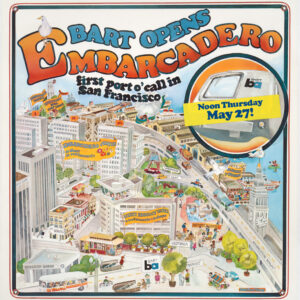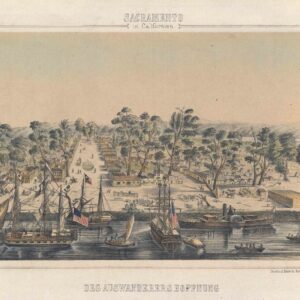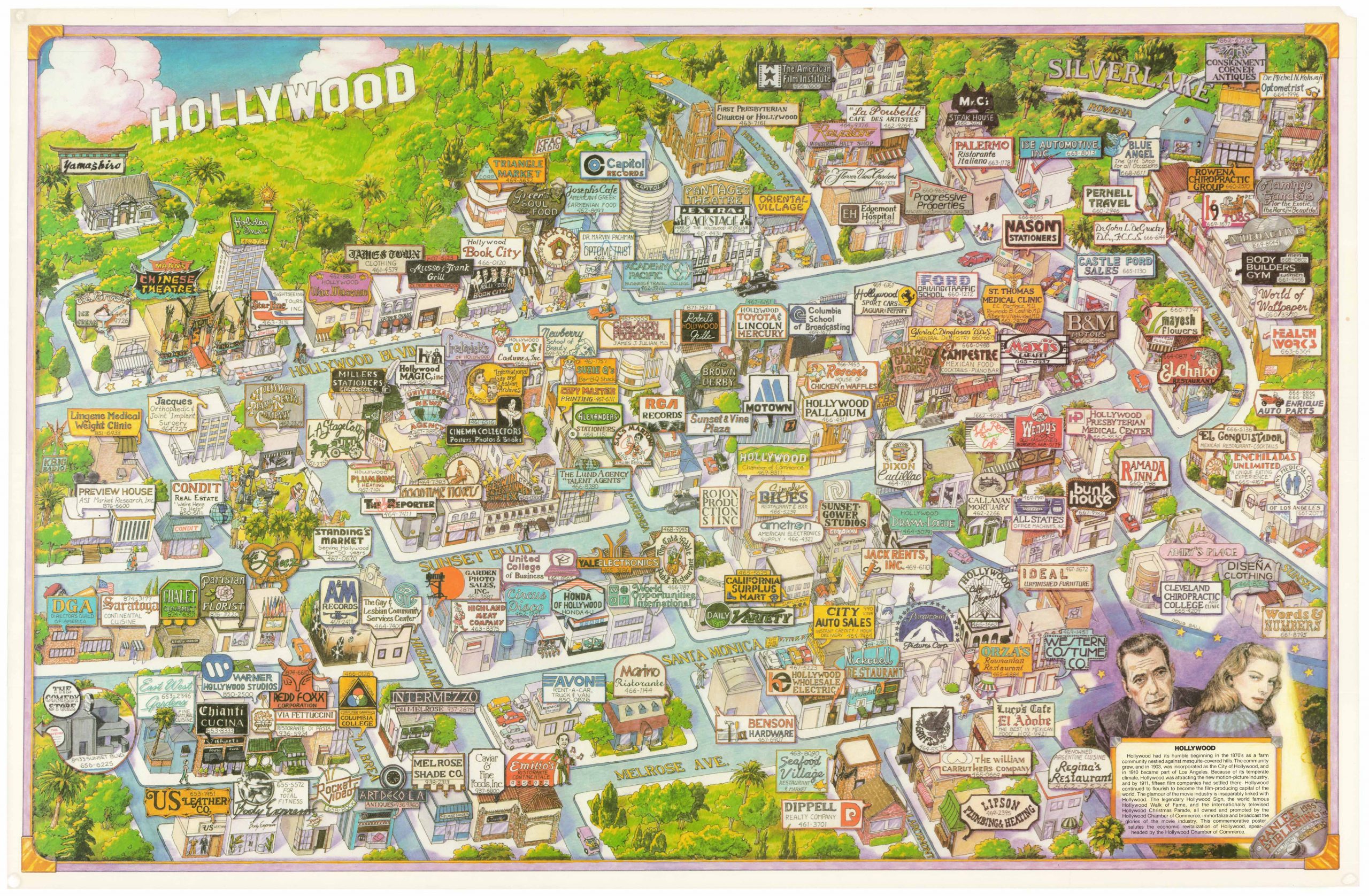Likely the earliest specific map of Paso Robles.
Map of Town Site and Hot Springs of El Paso de Robles.
Out of stock
Description
This early and very scarce 1886 map of Paso Robles, California, is likely the earliest specific map of the city. It was produced for the November 17, 1886, “Grand Auction” of land, which can be considered the city’s true origin.
Displaying the site of the planned future town of Paso Robles along the Salinas River, this map traces lots to be sold at the auction advertised on the verso, with some land set aside for a park (today’s Downtown City Park), churches, and a school (still the site of a school today). The El Paso de Robles Hotel and associated buildings, the main attraction in the area before this time, appear at the bottom-left. Running through the town site and terminating at a (still extant, recently restored) depot at the bottom is the Southern Pacific Railroad, the arrival of which made the auction and the town’s development possible. At the bottom are three insets: two maps displaying the town site within San Luis Obispo County and California, respectively, and a town view.
The verso contains extensive promotional text on the hot springs, the town expected to grow nearby, and the surrounding area, which could support various agricultural activities. The promoters were correct in predicting that the springs and hotel would form the “nucleus” of the future town but that more settlers would be attracted by the favorable soil and climate of the Salinas Valley that could support wineries, orchards, and other agricultural undertakings. The text repeatedly contrasts the warm, dry climate of Paso Robles in “Southern California” with Northern California’s cold, wet weather, offering a more affordable alternative to the Los Angeles area closer to San Francisco.
Promoting Paso
Paso Robles (still officially El Paso de Robles) was known in the Spanish and Mexican eras for its mineral hot springs, which were developed into mineral baths by Franciscan priests from the nearby Mission San Miguel, becoming a popular stopover for travelers on the Camino Real. The Blackburn Bros. and Lazard Godchaux purchased the Rancho Paso de Robles in 1857 from Petronilo Ríos. They later subdivided the rancho, with the Blackburns getting the portion with the mineral springs. One of the Blackburns was brother-in-law, by marriage, with Drury James, a cattle rancher and uncle of famed outlaw Jesse James, who became their business partner.
Although the El Paso de Robles Hotel had been built in 1864, attracting travelers from near and far, and some farmers (including at least one viticulturist) settled in the area, the town only really developed when it became a stop on the Southern Pacific Railroad the same year this map was published. As seen here, a town plan was quickly laid out, and lots were demarcated. The Southern Pacific arranged a special train for prospective buyers of property to come from San Francisco, coinciding with the Grand Auction by the Blackburns and James (operating as the “Southern California Land and Immigration Co.”) of November 17, 1886, for which this map was produced. The plan appears to have worked; 280 lots were sold on the first day of the auction, and by the end of that year, the city recorded over 500 residents and contained dozens of buildings. In 1889, Paso Robles was incorporated as a city, and construction began on a new, more prominent El Paso de Robles Hotel (burned down in 1940 and replaced with the Paso Robles Inn building that still stands on the same site).
Census
This map was compiled by N. C. Little and J. M. Gore for Blackburn Bros. and James and was printed by Britton and Rey in San Francisco in 1886. It is quite scarce, with examples only noted at the University of California Berkeley and Yale University in the OCLC and no known history on the market. We have been unable to locate an earlier specific map of Paso Robles, with the small number of maps predating this one dating to the late Mexican period and covering the entire rancho—a rare opportunity to acquire this rare and important map.
Cartographer(s):
Britton & Rey (1852 – 1906) was a lithographic printing firm based in San Francisco and founded by Joseph Britton and Jacques Joseph Rey in 1852. Especially during the second half of the 19th century, Britton and Rey became the leading lithography firm in San Francisco, and probably California. Among their many publications were birds-eye-views of Californian cities, depictions of the exquisite landscapes, stock certificates, and no least maps. While Rey was the primary artist, Britton worked not only as the main lithographer but was essentially also the man running the business. In addition to their own material, the firm reproduced the works of other American artists like Thomas Almond Ayres (1816 – 1858), George Holbrook Baker (1824 – 1906), Charles Christian Nahl (1818 – 1878), and Frederick August Wenderoth (1819 – 1884). Following Rey’s death in 1892 Britton passed the form on to Rey’s son, Valentine J. A. Rey, who ran it until the great earthquake and fire of 1906 destroyed most of the company’s assets.
Joseph Britton (1825 – July 18, 1901) was a lithographer and the co-founder of the prominent San Francisco lithography studio Britton and Rey. He was also a civic leader in San Francisco, serving on the Board of Supervisors and helping to draft a new city charter. In 1852, he became active in lithography and publishing, first under the name ‘Pollard and Britton,’ and then ‘Britton and Rey,’ a printing company founded with his friend and eventual brother-in-law Jacques Joseph Rey. Britton and Rey became the premier lithographic and engraving studio of the Gold Rush era, producing letter sheets, maps, and artistic prints.
Jacques Joseph Rey (1820 – 1892) was a French engraver and lithographer born in the Alsatian town of Bouxwiller. At the age of about 30, he emigrated to America, eventually settling in California. Here, he soon entered into a partnership with local entrepreneur and civic leader Joseph Britton. Three years later, Rey also married Britton’s sister, allowing his business partner and brother-in-law Britton to live in their house with them. Rey and Britton were not only an important part of the San Francisco printing and publishing scene but also owned a plumbing and gas-fitting firm. In the early years, both men would sometimes partner up with others on specific projects, but by the late 1860s, their partnership was more or less exclusive.
Condition Description
Folding map. Wear and loss at folds. Sloppy tape repairs.
References






![Flag Map of California [Signed in pencil by W.J. Goodacre]](https://neatlinemaps.com/wp-content/uploads/2022/01/NL-01134_thumbnail-scaled-300x300.jpg)
![Flag Map of California [Signed in pencil by W.J. Goodacre]](https://neatlinemaps.com/wp-content/uploads/2022/01/NL-01134_thumbnail-scaled.jpg)